The Adjective | English Grammar Class 7 PDF Download
Types of Adjectives
1. Adjectives of Quality
- The Adjective which tells us of what kind a person or a thing is, is called an Adjectives of Quality
- As they describe a person or thing, they are called Descriptive Adjectives. Adjectives of Quality answer the question ‘of what kind’ e.g. new, poor, beautiful, tall, etc.
2. Proper Adjectives
- The Adjectives which are formed from Proper Nouns are called Proper Adjectives e.g.
- Indian, American, African, Asian, Australian, European, Russian etc. Proper Adjectives always begin with a capital letter.
2. Proper Adjectives
- Interrogative Adjectives are words, that are used with a noun in a question, such as, – What, whose, which, and so on.
Degree of Comparison
Adjectives can be used to compare nouns or pronouns in respect of their qualities, quantities, and numbers. This comparison can be made in three different ways which we call Degrees of Comparison. They are the “Positive Degree” the “Comparative Degree” and the “Superlative Degree”.
Note: We often use than when we compare two things or people.
- Riya is a clever girl. (Positive degree)
- Priti is cleverer than Meena. (Comparative degree)
- Sonam is the cleverest of all the three girls. (Superlative degree)
Formation of Comparatives and Superlatives
Most Adjectives form their Comparative Degree by adding-er and their Superlative Degree by adding -est to the Positive.
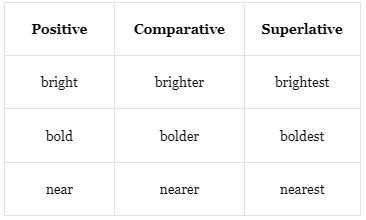
If the positive ends in -e we add only -r and -st to form Comparative and Superlative degrees.
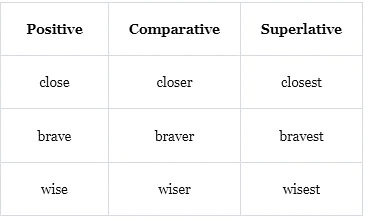 If the Positive ends in y, and has a consonant immediately before it, the “y” is changed into “I” before adding -er and -est. But if the “y” has a vowel before it, it is not changed into i.
If the Positive ends in y, and has a consonant immediately before it, the “y” is changed into “I” before adding -er and -est. But if the “y” has a vowel before it, it is not changed into i.
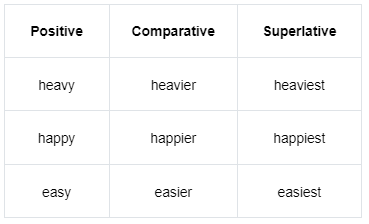 Single syllabic adjectives ending in a consonant preceded by a short vowel add – “er”, “est” after doubling the last consonant.
Single syllabic adjectives ending in a consonant preceded by a short vowel add – “er”, “est” after doubling the last consonant.
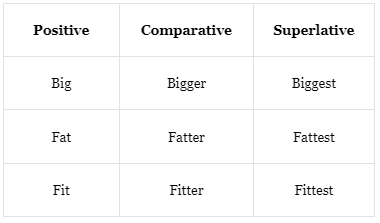
Many Adjectives of two syllables and all adjectives of more than two syllables form their Comparatives by adding “more” and their Superlatives by adding “most”.
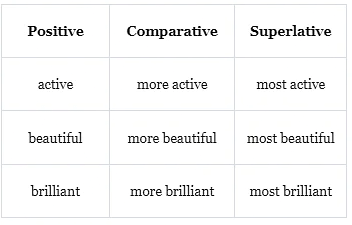
Irregular Comparisons:
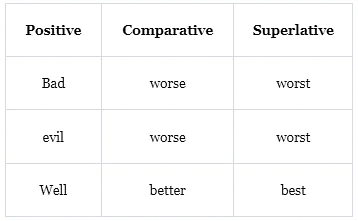
Uses of Adjectives
There are twelve adjectives that are derived from Latin. Of these five are used only as Positive Adjectives – interior, ulterior, exterior, major and minor and seven are used as Comparative Adjectives. They are followed by “to” instead of “than”. They are inferior, superior, prior, anterior, posterior, senior and junior as,
- He has performed many major operations. (positive degree)
- Mr. Lal is senior to me in service. (comparative degree)
When the possessive precedes an adjective in the superlative degree “the” is not used as, I have done my best.
Superlative degree is generally preceded by “the” as, Kolkata is the safest sea-port in India.
|
39 videos|358 docs|61 tests
|
FAQs on The Adjective - English Grammar Class 7
| 1. What is an adjective and how is it used in a sentence? |  |
| 2. Can adjectives be used in comparative and superlative forms? |  |
| 3. What are some common examples of adjectives? |  |
| 4. How do adjectives affect the meaning of a sentence? |  |
| 5. What are the different types of adjectives? |  |
















